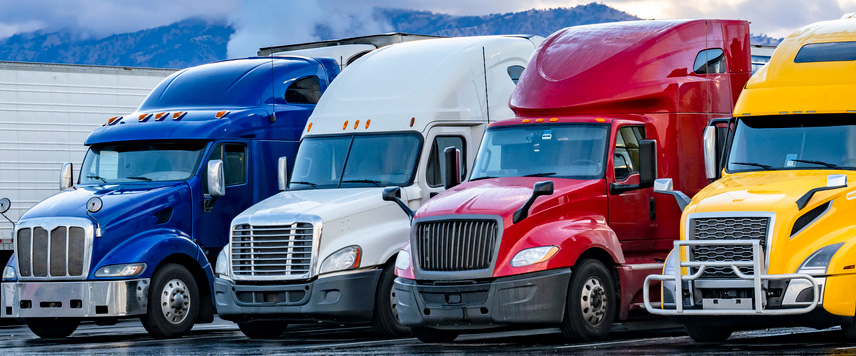Trucking company professionals in human resources, particularly those who are in the business of hiring truck drivers, know that the past five years have been a trial for the transportation industry as a whole. From pandemic problems to inflation irritations, truck drivers have been at the forefront of the most problematic industry in the country, and companies are still struggling to balance the needs of consumers with the spotty loads and unstable pricing structures of the current markets. The one thing that everyone seems to agree on is that “the trucking industry remains pivotal in maintaining the flow of goods and services” across the U.S., and that distinction does not look like it will be diminished or changed any time soon.
However, along with the rollercoaster of economic imbalances, the ever-evolving face of the industry has also changed the way that truck drivers are recruited and retained. According to LinkedIn, “In the modern logistics landscape, truck drivers are essential to the industry.” While that tidbit isn’t anything new, what is new is HOW the landscape has changed and how trucking companies are adapting in their pursuit of qualified truck drivers.
What Are the Challenges Facing Truck Driver Recruitment?
Trucking companies are facing a myriad of challenges when it comes to recruiting truck drivers. Firstly, as many experts and the writer of this blog has noted in the past, there is a shortage of truck drivers. Many of America’s most experienced drivers are starting to reach retirement age. While some are continuing to drive, others are embracing their well-earned rest. This leaves the industry grappling with replacing these drivers, and they are finding that they cannot rely on the same demographic of citizens to become truck drivers. This leads to the next issue for trucking companies, which is finding ways to evolve with the changing demographics of drivers. For decades, the trucking industry has relied on middle-aged white men as the backbone of trucking companies. Today, that picture is far removed from reality. Not only are minorities making gains in the industry, but women and younger drivers are also slipping into the driver’s seat. While many more drivers are needed, trucking companies are already being urged to open their eyes to the recruiting possibilities.
Along with the changing demographics of truck drivers, the drivers themselves are asking for more from the companies they choose to work with now. Trucking is “characterized by long hours and extended travel,” making health risks an extremely real problem for many drivers. From more comfortable truck cabs to programs aimed at reducing the health risks of driving, companies are realizing that they need to invest in their drivers to keep them healthy and happy on the road. Technology is also playing a heavy role in the recruitment and retention of truck drivers. “Drivers need to be skilled in traditional driving and adept with modern technological systems like telematics and automated logistics systems, a dual requirement that complicates recruitment.” From new GPS systems to digital load boards and more, truckers are finding that it takes more than just operating a truck to be a driver.
“It’s Too Late, To Turn Back Now…”
The future of trucking will not wait on any driver or transportation company to get ready for what comes next. Proper preparation, now, will be the only thing that guarantees success in the temperamental economic climate ahead. So, what are the trends that companies should be using in their recruiting programs to attract truck drivers?
There are several steps trucking companies can take to improve driver recruitment in 2025. The first is to consider introducing enhanced compensation packages. The Covid-19 pandemic saw a lot of transportation companies offering substantial bonuses for joining their teams. While many of these offers have disappeared over the intervening years, it is important to remember that these types of compensation can become “essential in attracting new talent and retaining experienced drivers.”
Some trucking businesses have become concerned that compensation perks, like sign-on bonuses, only attract the types of drivers that leap from one driving job to another. This became common during 2020 and 2021 for those who struggled with keeping a steady income flow during the pandemic. For those with concerns, it is important to pair compensation with a focus on developing drivers’ skills and building a diverse and inclusive workforce. Put simply, there are easy ways to combat this. First, “Investing in comprehensive training programs that not only focus on driving skills but also on technological proficiency and soft skills is crucial.” Giving truck drivers the time and space to cultivate additional skills is a great way to boost retention, while also giving your company the qualified and experienced drivers needed to diversify the fleet. Remember that this doesn’t just include endorsements on their CDL license; certifications like Hazmat or Tanker can be beneficial for drivers to have for their companies. Although these are excellent skills to have, it is important to remember that truck drivers are the face of many transportation companies now. By teaching drivers to lean into “soft skills,” they can expand their qualifications and showcase their readiness and importance to management. What are soft skills? These include “communication, problem-solving, and customer service skills is essential to setting yourself apart from other candidates.”
It is also imperative that both trucking companies and truck drivers prepare to embrace the coming changes in technology. Between AI, autonomous trucks, telematics, data-driven logging devices for making sure truckers don’t drive too long, and so much more, there is a great deal more to driving a truck than just turning on the ignition and shifting into gear. While many older truck drivers are hesitant around technology, many are still fully aware of the impact these new tools will have on the industry. Many are attempting to learn and evolve, but trucking companies will need to offer the development necessary to make their drivers comfortable with this technology.
Conclusion
Every trucking and transportation company understands that recruiting is about much more than just hiring truck drivers. The needs of businesses go far beyond having drivers that can simply drive a truck. Not only do employees need to be able to drive, but they also have to adaptable to changing technologies and be able to apply softer skills, like communicating face to face during pick ups and drop offs. Companies like Rig On Wheels are stating that “With a focus on higher standards, inclusivity, and regulatory compliance, the industry is evolving to meet new challenges and opportunities.” What does that mean, though? In short, the recruitment of truck drivers is evolving just as quickly as the industry itself is. Those companies who need truckers should take note and be ready to implement their own changes to attract new and experienced drivers in the year to come.
__________________________________________________________________________
Meaghan Goldberg covers recruitment and digital marketing for Lionzone. A Patterson, GA native, after graduating from both Valdosta State University and Middle Tennessee State University, Meaghan joined Lionzone in 2018 as a digital recruitment strategist before becoming the social media manager.
Resources:
https://www.rigonwheels.com/post/the-future-of-truck-driver-recruitment-trends-to-watch
https://www.linkedin.com/pulse/future-truck-driver-recruitment-trends-watch-rig-on-wheels-llc-8fo0c




